Original Author: @YBBCapital Researcher Ac-Core
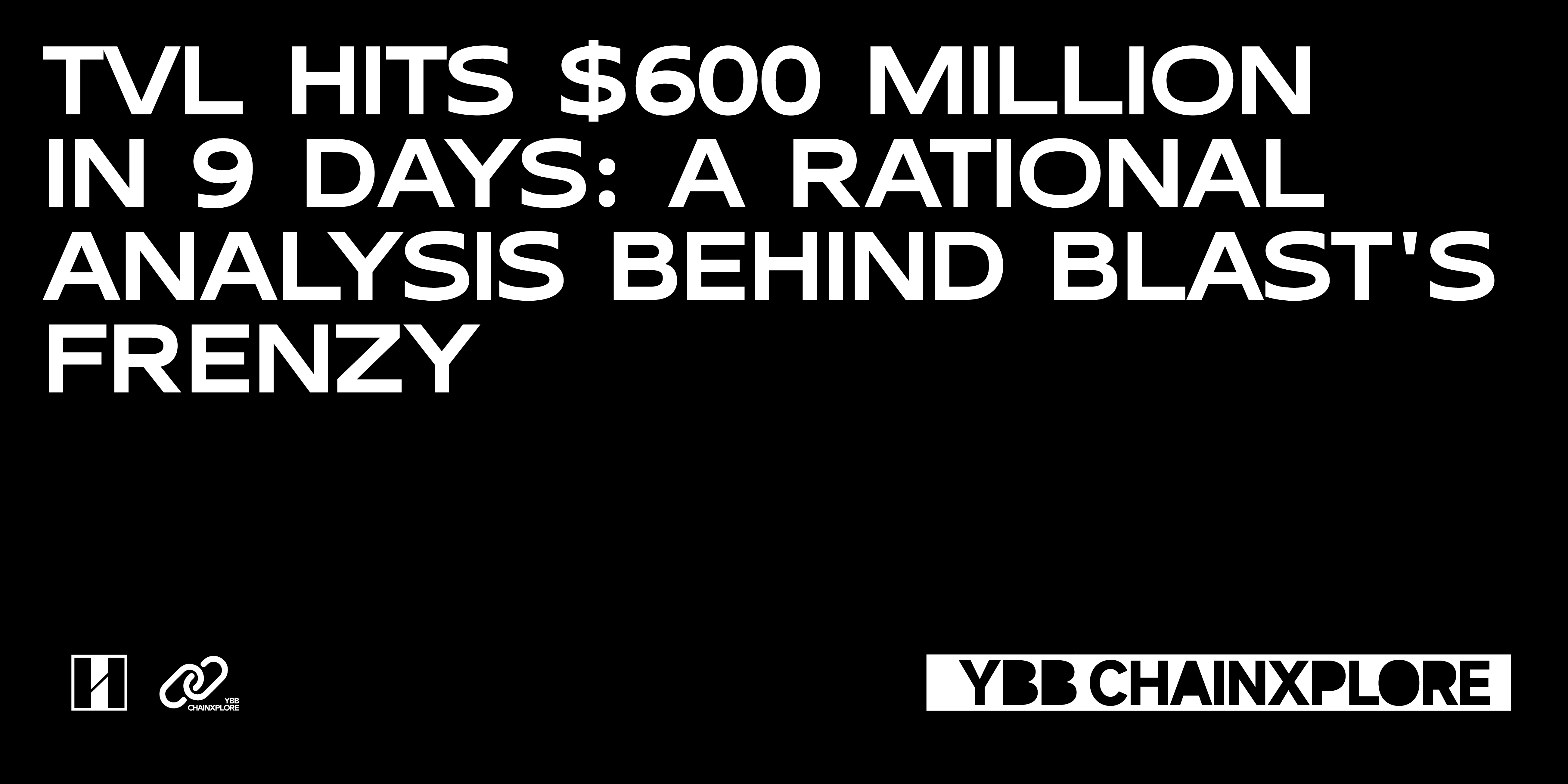
Preface:
With the recent launch of the Layer2 network Blast by the founder of Blur, the market's emotions towards the strong expected airdrop income have been mixed. According to the official announcement, Blast's mainnet will go live in February next year, and will continue to airdrop based on points similar to Blur's previous model. In just a few days, the growth of Blast's TVL is impressive, but this surprise attack by Blur on the Layer2 narrative undoubtedly leads to three possible outcomes: sparking a new round of hot topics; burying a huge landmine and the "plagiarism" of related track projects. From a marketing perspective, this event is undoubtedly a market battle between strong technical Layer2 and strong consensus Layer2.
Review of the basic structure of Ethereum Layer2
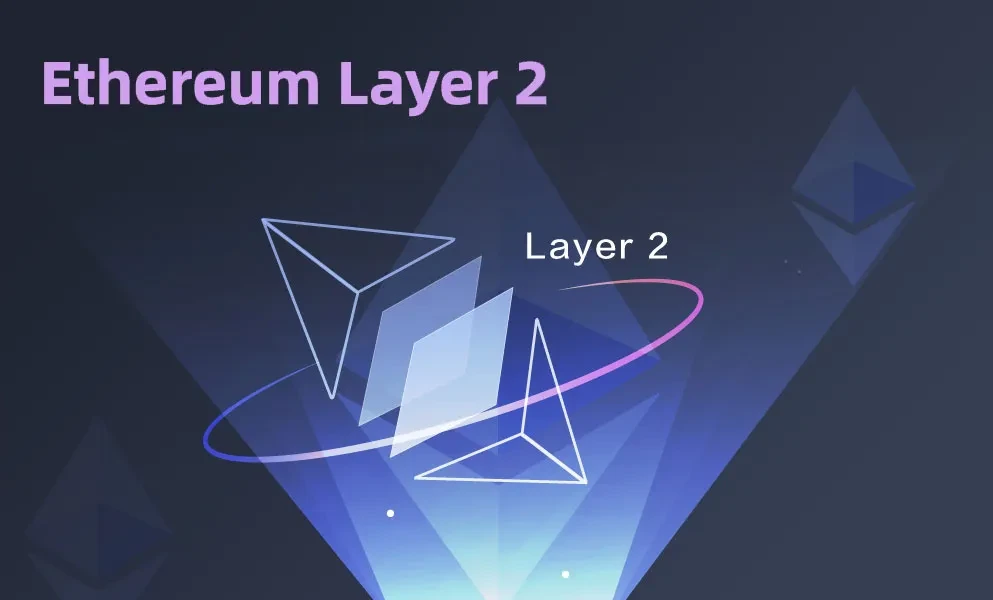
Source: Top Ethereum Layer 2 Networks
After Blur proposed its "Stake Layer2" new narrative, let's first understand the basic types of Ethereum Layer2 structures before making a judgment. It is a scalability solution designed to increase transaction throughput and reduce transaction costs by introducing second-layer protocols or protocol stacks on the Ethereum blockchain. It can be roughly summarized as the following types:
State Channels
Definition: State channels are a solution that allows parties to exchange signatures directly without having to write every transaction to the blockchain. The basic principle is to create an off-chain environment between participants, allowing transactions to take place off-chain, and only broadcasting to the network when the final state needs to be submitted to the blockchain. This method greatly improves transaction efficiency and throughput.
Operation: In state channels, participants can open a channel, conduct multiple transactions, and then submit the final state of the channel to the blockchain. This means that only the opening and closing of the channel require on-chain transactions, while transactions within the channel can take place off-chain, avoiding the cost and time delay of every transaction on the blockchain.
Example: The Lightning Network, which is a state channel solution for Bitcoin. Users can conduct fast and low-cost micropayments off-chain, and only submit the final state to the blockchain when the channel needs to be closed. On Ethereum, the Raiden Network is a similar state channel solution that achieves highly scalable transactions through the creation of a multi-party channel network.
Sidechains
Definition: Sidechains are chains that are separate from the main blockchain but compatible with it, and can have their own consensus mechanism and block generation rules. Users can lock assets on the main chain and then conduct transactions on the sidechain, ultimately submitting the transaction results to the main chain. This method improves overall network performance by achieving higher throughput on the sidechain. The following are several common sidechain contract bridging methods:
Pegged Bridge: This is a mechanism that achieves cross-chain interaction by anchoring or mapping assets between two chains. In this bridging method, users lock assets on one chain, and the corresponding amount of assets is generated on the other chain. This usually involves some trusted intermediaries responsible for supervising the locking and releasing of assets.
Lock-and-Mint Bridge: This bridge works by locking assets on one chain and then creating the corresponding amount of assets on another chain. Users lock assets on the original chain, and the bridging protocol issues the corresponding amount of tokens or assets on the target chain. This method usually requires a trusted intermediary or multi-signature contract to ensure the security of the locking and releasing process.
Cross-Chain Atomic Swap: This is a decentralized way that allows users to conduct atomic-level exchanges on two chains, either completing the entire transaction or none at all. This method usually uses smart contracts and hash locking to ensure the reliability of transactions. Atomic swap methods do not involve trusted intermediaries, but involve more complex smart contract designs.
Proxy Bridge: This is a way of conducting cross-chain interaction through an intermediary proxy. Users send assets to the bridging proxy, which then performs the corresponding operations on the other chain and sends the corresponding assets to the target address. An example of this method is executing transactions between two chains through a multi-signature contract.
Light Client Bridge: The light client bridge uses lightweight clients to track the state on the source chain and then generate the corresponding state on the target chain. This method does not require locking and unlocking of assets, but ensures the reliability of interaction by verifying the state on both chains. This is quite common in some Layer2 solutions on Ethereum.
Plasma
Definition: Plasma is a Layer2 framework originally proposed by one of the co-founders of Ethereum, Vitalik Buterin. Its design inspiration comes from a tree-like structure, which includes multiple independently running child chains. Each child chain can process transactions and only submits the final state to the main chain when there is a dispute. This structure allows each child chain to be considered as an independent sidechain, capable of running at lower costs and higher throughput.
Operation: The key idea of Plasma is to decentralize transaction processing to multiple child chains, thereby reducing the burden on the main chain. This layered structure helps to improve the scalability of the entire system while maintaining the security requirements of the main chain. However, Plasma also faces some challenges, such as designing exit and dispute resolution mechanisms on the child chains.
Hybrid Solutions
Definition: These are hybrid methods adopted by some Layer2 solutions, which combine the advantages of state channels and sidechains, aiming to provide more flexible solutions in different usage scenarios.
Operation: State channels can be used in the system to process certain high-frequency transactions, while sidechains can be used to process larger or less frequent transactions. This hybrid approach can choose the optimal solution according to actual needs, thereby enhancing the flexibility of the entire network system.
Rollups
This is the current mainstream and well-known scaling solution, which mainly migrates computation and storage off-chain. According to a report from the blockchain infrastructure department Chainstack, without Layer2 Rollup networks such as Optimism and Arbitrum, Ethereum transaction fees would be four times the current price. It is currently mainly divided into two categories: Optimistic Rollup and ZK Rollup.
Optimistic Rollup: It adopts an "optimistic execution" approach, assuming that transactions are valid, and only rolls back when there is a dispute. This reduces the burden on the main chain and increases overall throughput. However, an effective dispute resolution mechanism is needed to ensure the security of the system.
ZK Rollup: It uses zero-knowledge proofs to verify transactions on the sidechain, ensuring the validity and security of transactions. This method executes transactions on the sidechain and then submits the verification data to the main chain, fully leveraging the powerful functionality of zero-knowledge proofs, providing high privacy and security.
Validium Chain
Validium Chains combine the characteristics of sidechains and state channels, executing transactions off-chain while using zero-knowledge proofs to ensure the validity of transactions. This method processes transactions off-chain, avoiding the cost of executing every transaction on the main chain, while ensuring the security and verifiability of transactions. This provides a novel combination for high performance and privacy protection.
State Rent
First, it should be noted that State Rent is not a Layer2 solution, but rather an improvement mechanism on the main chain. It encourages users to release unused states by introducing rent, thereby reducing the storage pressure on the chain. Although it does not directly increase transaction throughput, State Rent helps optimize the use of on-chain resources and improve overall network efficiency.
Back to Blast itself

Source: Season 3 Rewards & Loyalty
The above different types of Layer2 solutions are all dedicated to solving the scalability issues of blockchain, and each solution has its unique advantages and use cases. The choice of the appropriate method often depends on the specific application's needs, security requirements, and considerations for user experience. It has been confirmed that Blast currently relies on a 3/5 multisig to control the recharge address, similar to how most Layer2 solutions also rely on multisig for management (see extended reading [2]). Even though the issue of centralization of the Rollup sequencer has not been resolved, from the perspective of community consensus, Blast has still achieved tremendous success in the short term.
Potential Risks for Lido
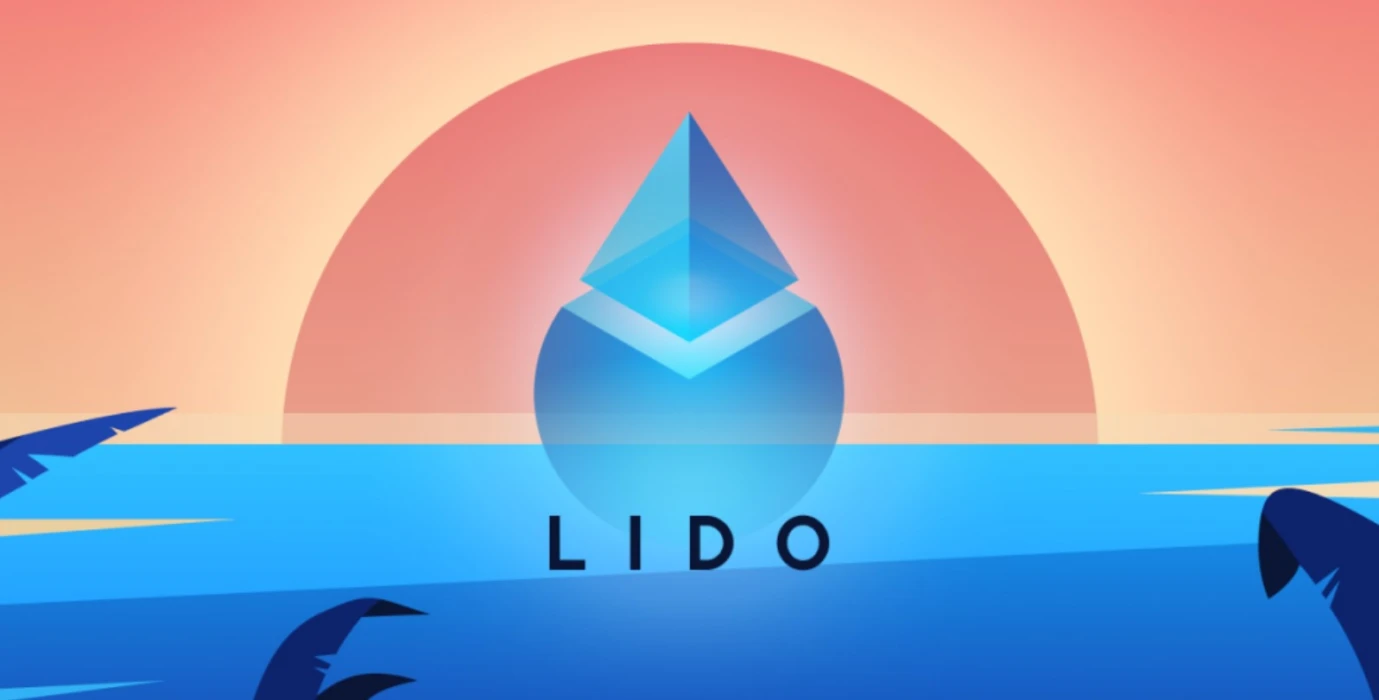
Source: ASIA ARYPTO
Lido is a decentralized staking service based on Ethereum, allowing users to stake their ETH tokens in the Ethereum 2.0 network to support Ethereum's Proof of Stake (PoS) mechanism. The Stake model of Blast essentially involves staking users' ETH assets in Lido and RWA, and distributing the returns to users and developers, with native tokens as additional rewards. Therefore, staking a large amount of funds in the Lido network also increases the security risks for stakers, facing a somewhat continuously "centralized" staking method, which may bring the following risk factors affecting the Lido project:
Liquidity Risk: Liquidity is a key factor for the success of the Lido project. If there is insufficient liquidity, users may face difficulties when trying to unstake or withdraw funds. This situation may be influenced by market factors, network congestion, and other factors. Solutions to this problem may include formulating more flexible unstaking policies, increasing the number of market participants, or collaborating with other DeFi projects to improve overall liquidity.
Technical Upgrade and Evolution Risk: The Ethereum network and blockchain technology are rapidly evolving and may undergo upgrades and evolution. Lido must keep up with these changes in a timely manner to ensure that its technical infrastructure can adapt to the latest standards and upgrades, maintaining the security and availability of the system.
Over-centralization Risk:
Node Centralization: Although Lido aims to be decentralized, the actual validator nodes are still operated by specific institutions or individuals. If these nodes are subject to some form of control or collusion, it may lead to centralized control of the entire system;
Social Engineering and Malicious Behavior: Validator node operators may be subject to social engineering attacks or other forms of malicious behavior, including attacks, offline incidents, or malicious manipulation;
Technical Centralization: The core functionality and critical infrastructure of the Lido protocol may be controlled by a few technical entities, leading to technical centralization risks. For example, if the upgrade of the core protocol is too centralized, it may lead to excessive control over the protocol;
Fund Centralization: The token issuance and staking of Lido may be controlled by some large holders, who may have a disproportionate influence on the protocol. As shown in the data from Dune, on November 29th: the total staked amount on the Ethereum Beacon Chain exceeded 28.64 million ETH, with Lido's market share reaching 32.20%;
Governance Centralization: If the governance mechanism of the protocol is too centralized, decision-making power may be concentrated in the hands of a few entities or individuals, ignoring the voice of the wider community;
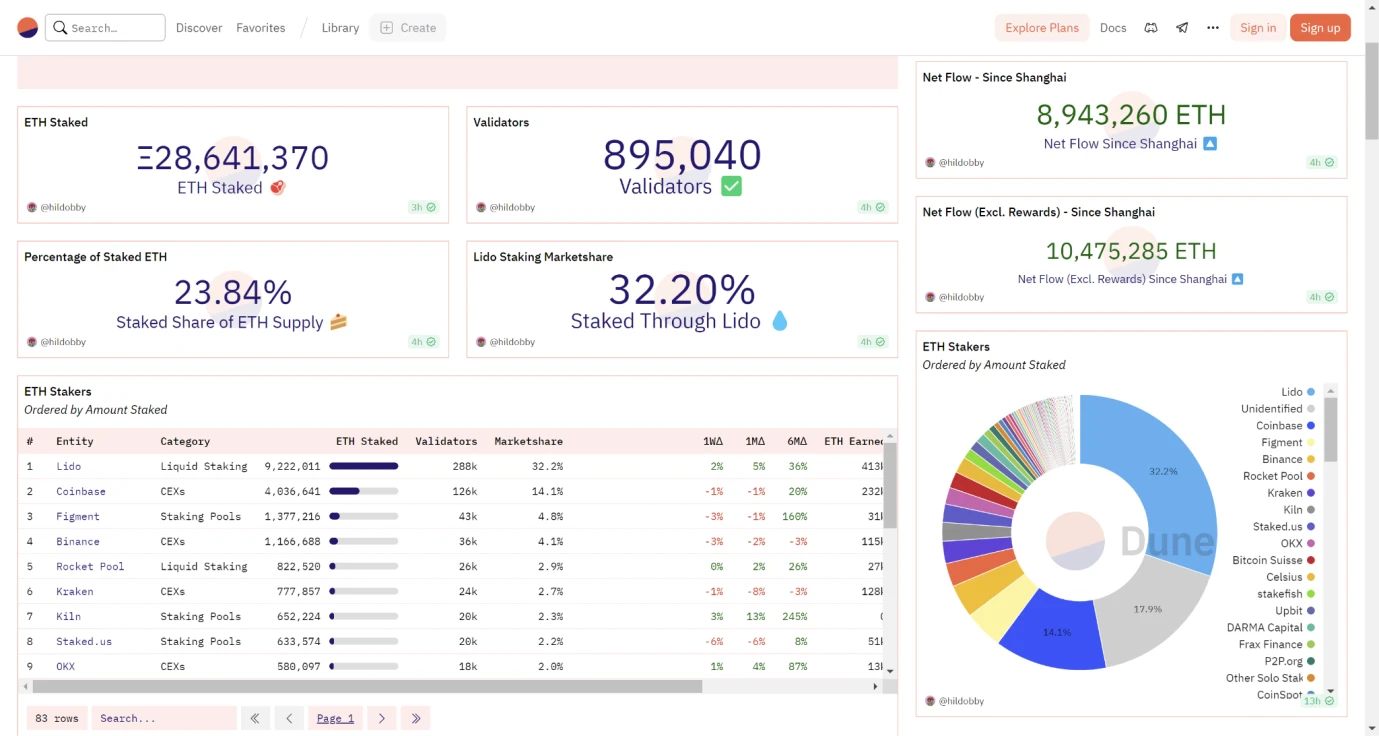
Data Source: Dune
Contract Economics Risk: The project's economic incentive mechanism needs to be carefully designed to ensure the long-term interests of users and the ecosystem are protected. Improper incentive mechanisms may lead to fund loss, system instability, or other negative consequences. The project team should continuously evaluate and optimize these incentive mechanisms to adapt to changing market conditions and user behavior;
Security Audit Risk: The security of smart contracts is the cornerstone of the success of the Lido project. If smart contracts have vulnerabilities, it may lead to the loss of user funds. Therefore, thorough and regular security audits of contracts are crucial. At the same time, the project team needs to actively adopt feedback from the security community and promptly address any discovered vulnerabilities;
Community Governance Risk: The design and implementation of the community governance model may affect the project's development direction and decision-making process. Ineffective community governance may lead to difficult decision-making and hinder the project's development. Therefore, the project team should work closely with the community to establish transparent governance mechanisms and encourage broad community participation;
Black Swan Events: Unpredictable events may have a significant impact on Lido. The project team needs to establish flexible risk management strategies to deal with unforeseen events and ensure the system has sufficient resilience against risks.
Reflections and Impact on Blast

Source: Blast Official
Pacman announced that he has raised $40 million for the Blur ecosystem, with participation from angel investors such as Paradigm, Standard Crypto Investment, and advisors from Lido including Hasu and The Block CEO Larry. The birth of Blast comes with the aura of Blur and the financing support from Paradigm, attracting a lot of attention from the start, especially with the recent boost from the new narrative, which also brings many thoughts.
1. Where does Layer2 Blast's native interest rate come from?
When users deposit tokens into Blast (L2) network, they are essentially locking equivalent tokens, which Blast then puts into Lido and RWA for staking. Blast distributes returns to users and also distributes original points to users. At the same time, this brings two direct issues:
Staking a large amount of user assets in Lido to a certain extent increases the centralization of the staking track. For users, they not only need to consider the operational security of Blast but also the operational security of Lido. Assuming both are secure, if TVL continues to maintain its current upward trend, and due to the uncertainty brought by the secondary market price, multiple factors will to some extent bring more uncertainty to the entire Ethereum network;
If Blast is seen as a new "Stake Layer2", users staking a large amount of ETH assets to earn returns also locks a large amount of liquidity. How Dapp applications in the Blast ecosystem obtain liquidity and how to explain the new coin issuance expectations are also worth considering.
2. Technical and Consensus, which direction of Layer2 is more likely to be accepted by the market?
First, the main goal of blockchain is to solve trust and security issues in transactions. Once information is confirmed and added to the blockchain, it will be permanently stored unless someone has the ability to control more than 51% of the nodes in the system, in which case a single node cannot modify the data. The development of the industry cannot be separated from technological progress. From a technical point of view, Blast is not innovative, but rather takes a different approach. Strictly speaking, Blast does not belong to Layer2.
However, the strongest essence of blockchain is still finance. Technology is more based on mathematics and code, while finance involves more psychological expectations. The most successful aspect of Blast is leveraging its own and Paradigm's strong traffic to directly address users' expectations for project airdrops in a straightforward manner. This, to some extent, is undoubtedly a distribution of profits to users through the results of Stake, compared to other strong technical Rollups, by earning the price difference through Gas. Liquidity is the soul of all public chain systems, and Blast has achieved a strong consensus trend in the short term through the expected airdrop. In the short term, strong consensus will still be accepted by the market, but long-term maintenance requires more opportunities.
3. Implications from Dan Robinson, Research Director at investment firm Paradigm?
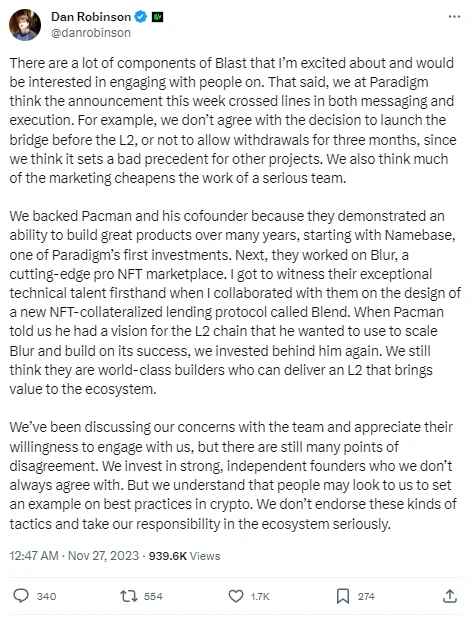
Source: X (Twitter) @danrobinson
Different opinions on Blast project decisions:
Order of bridging and L2: Paradigm mentioned that they disagree with the decision to launch bridging before L2. This may indicate that they believe there is a risk in launching bridging before the L2 solution is ready, which may affect the stability and security of the project;
Three-month withdrawal restriction: Similarly, the decision to not allow withdrawals for three months may be seen as setting a precedent unfavorable to users, which may cause user concerns and dissatisfaction.
Concerns about marketing approach:
The article mentioned dissatisfaction with the marketing approach of the Blast project, pointing out that these methods may tarnish the image of a serious team. Specifically, this may refer to issues with the project or technology's promotional methods, possibly presented in an exaggerated or inaccurate manner.
Support for Pacman and the team's past work:
Paradigm reviewed their support for Pacman and his partners' past work, from Namebase to Blur and then to Blend. This indicates that Paradigm has a certain level of trust in this team, based on their demonstrated technical abilities and track record of building excellent products over the past few years.
Support for the L2 vision:
Paradigm stated that they invested in the Blast team because Pacman presented a vision for the L2 chain and hoped to use it to expand the success of the Blur project. This indicates that Paradigm believes the Blast team is capable of providing a valuable L2 solution and making a positive contribution to the entire ecosystem.
Discussions with the team:
Paradigm emphasized that they have had discussions with the Blast team, expressing their concerns, and the team has shown willingness to engage with them. This indicates that both parties are willing to resolve issues through dialogue when difficulties or disagreements arise.
Responsibility and role model:
Paradigm emphasized their sense of responsibility in the crypto field, acknowledging that people may value their practices in the field. They explicitly stated that they do not support certain strategies, emphasizing their serious approach to their responsibility in the ecosystem.
Overall, this passage reflects some specific objections from Paradigm to the Blast project decisions, but also expresses their support for the Blast team's past work and emphasizes their sense of responsibility in the crypto ecosystem. Subsequently, according to Wu Shuo Blockchain News, Pacman also tweeted to clarify several points:
The high returns offered by Blast are not a Ponzi scheme. The returns come from Lido and MakerDAO, based on Ethereum staking returns and on-chain T-Bills. These returns are a core part of the on-chain and off-chain economy and are sustainable;
The market strategy (GTM) is unrelated to Paradigm. Although Paradigm provided consultation on the technical L2 design, the GTM is entirely decided internally by Blast;
The invitation system of Blast is not a new mechanism. The invitation system has been in place for a long time and is designed to reward users who contribute to the L2 ecosystem, as a way to give back to the community. This is the reason for the existence of the invitation rewards.
Note: This analysis represents the author's personal opinion and does not involve guidance. Any objections can be ignored.
4. Rapid surge in TVL exceeding 600 million USD
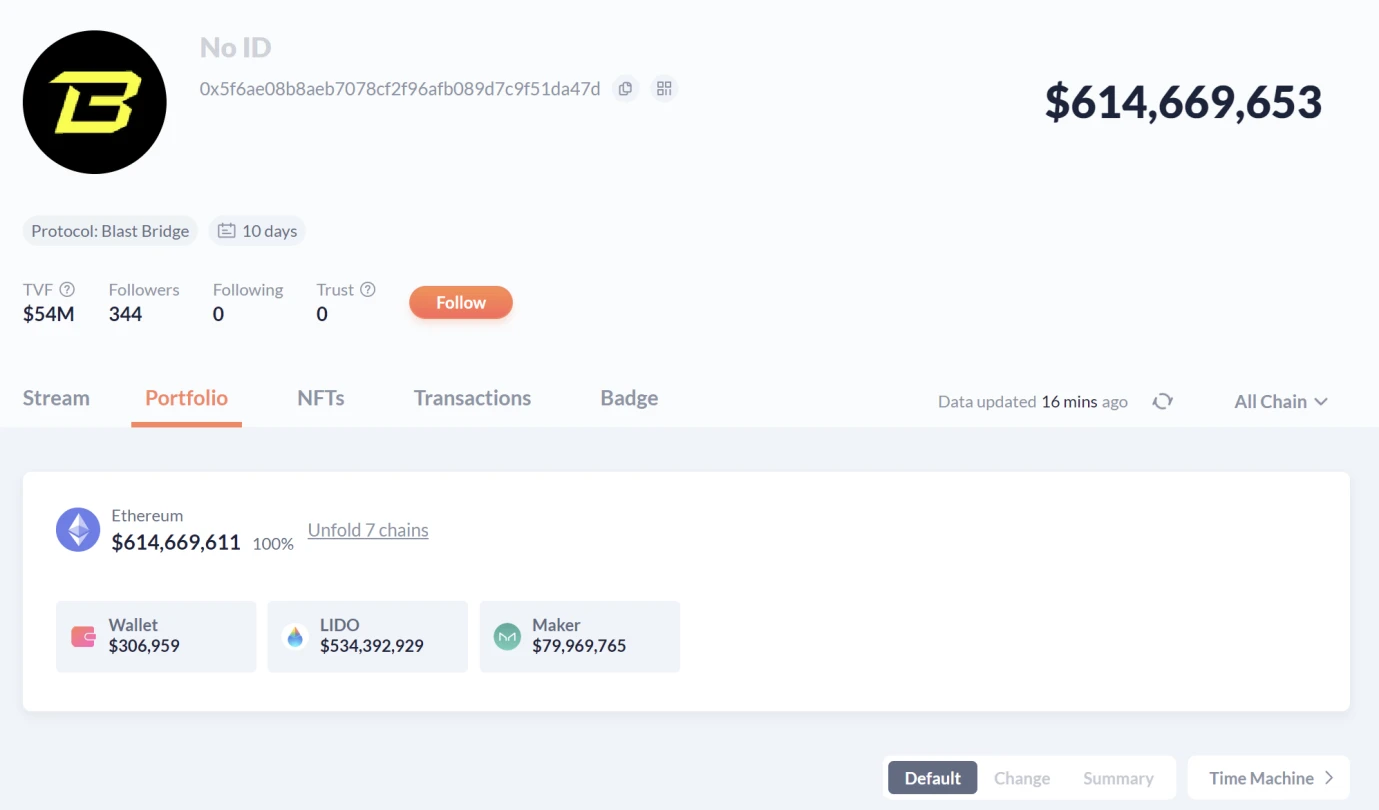
Data Source: DeBank
Since Blur founder Pacman announced the launch of the new project Blast on November 21, as of November 29, in just one week, the total locked value (TVL) of cryptocurrencies in Blast has reached 614 million USD, sparking a hot discussion in the industry in the short term. This "Stack-centric Layer2" trend has undoubtedly achieved great success in market consensus.
5. The "new task" from ApeCoin
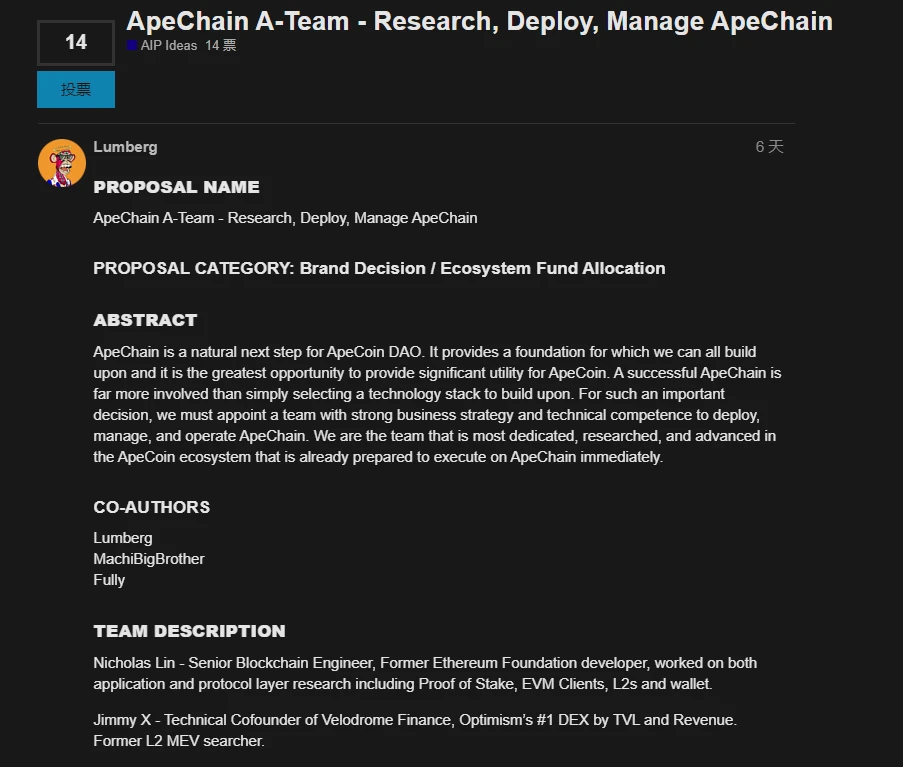
Source: ApeCoin Official
The article mentioned a proposal called "ApeChain," which aims to promote research, deployment, and management of ApeChain in the ApeCoin DAO ecosystem (original text see extended link [3]). The team met with multiple technical solution partners and discussed the strengths and weaknesses of each technical solution to seek support from each partner. After careful consideration, the project team chose to support Layer2 Rollups to better attract developers to build on ApeChain.
This leads us to think whether ApeCoin intentionally caught up with the trend of Blast at the first opportunity?
Its future development will be compatible with the Optimism Superchain ecosystem and promises to provide basic token grants to participate in Superchain governance, which may lead us to think that Ape has quickly caught up with a wave of hotspots by leveraging the TVL suction effect of Blast. The specific costs of the DAO include: infrastructure, business operations, developer relations, and ecosystem development.
The infrastructure includes:
Block explorers such as: Blockscout, Etherscan, or open-source alternatives like Otterscan;
Oracles: Chainlink, Pyth, or Redstone;
Layer 1 data publishing costs on ETH;
Costs related to the operation of the sequencer.
Two ways to handle discussion stage costs:
Direct issuance of ApeChain (AC) tokens, with no cost to the DAO;
The team will raise funds for the operation and development of ApeChain, and in the future, governance tokens will be distributed to supporters of ApeCoin.
Finally, the launch of Blast itself from a marketing perspective is undoubtedly a successful attempt, leveraging its industry influence to straightforwardly explain the airdrop rules, attracting a large amount of staked funds in the short term, igniting a new round of Stake enthusiasm in the market. Its short-term TVL fundraising of over 600 million USD has also attracted attention from other Layer2 and Ape communities, but it is worth noting that it has related uncertain risks and should be approached with caution.
Extended links:
[1] https://blockworks.co/news/ethereum-rollups-save-gas-fees
[2] https://twitter.com/eternal1997L/status/1729128004239216863
[3] https://forum.apecoin.com/t/apechain-a-team-research-deploy-manage-apechain/20163
免责声明:本文章仅代表作者个人观点,不代表本平台的立场和观点。本文章仅供信息分享,不构成对任何人的任何投资建议。用户与作者之间的任何争议,与本平台无关。如网页中刊载的文章或图片涉及侵权,请提供相关的权利证明和身份证明发送邮件到support@aicoin.com,本平台相关工作人员将会进行核查。




